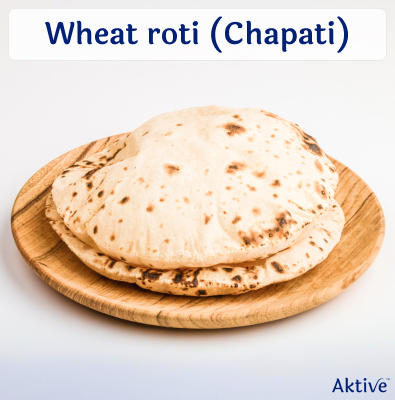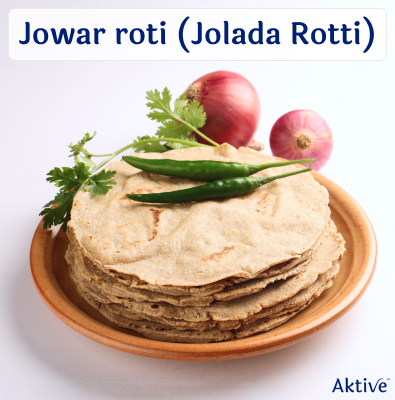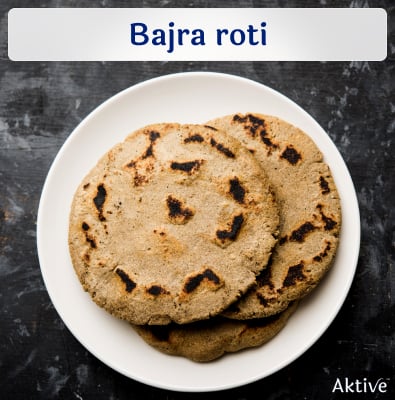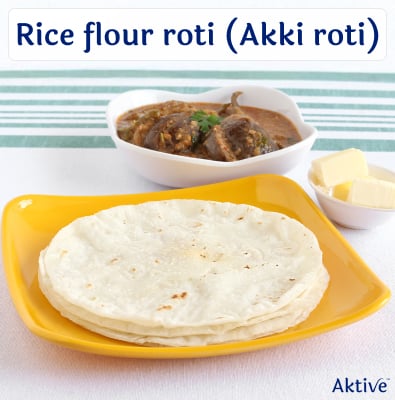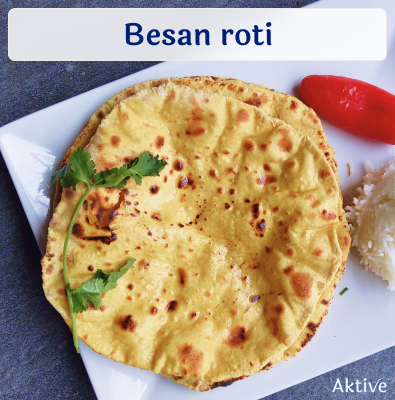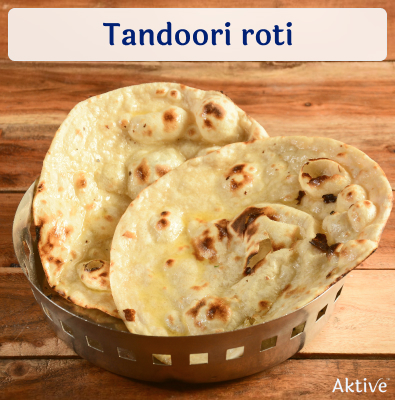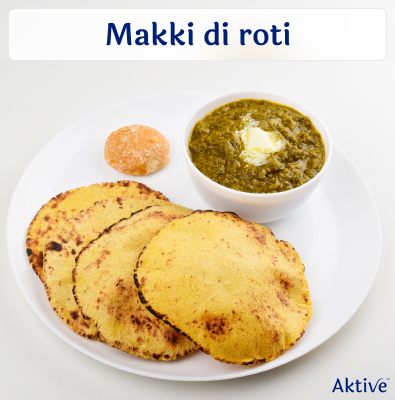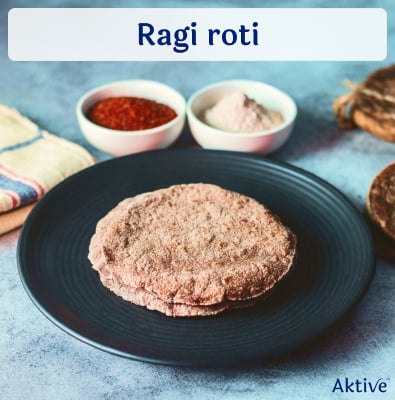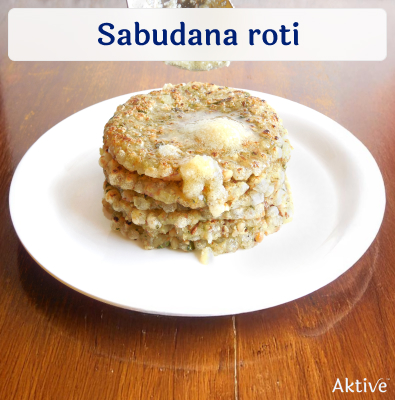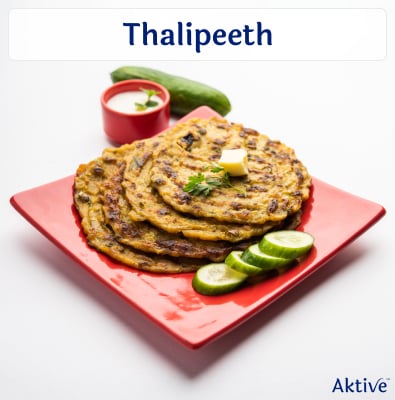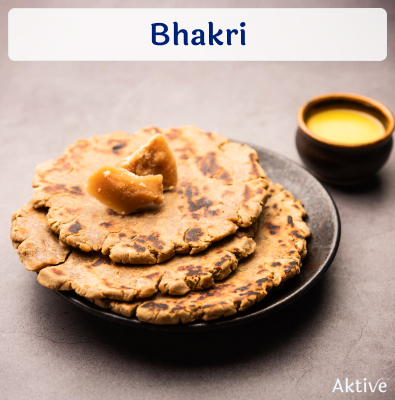- A medium-sized whole-wheat roti (approx. 40g in weight) provides 106 calories and has a good balance of macronutrients, vitamins, and minerals.
- Roti is a versatile meal and can be made from rice flour, jowar, bajra, millet, etc. Multigrain rotis are more nutritious than plain rotis.
- The calories in 1 roti will vary with its size and what you eat it with. For example, having dal or sabzi with roti will increase the total calorie count to 170-300 calories.
It’s a delight to eat piping hot rotis with some delicious homemade sabzi (vegetables) and dals (lentils).
Roti, also known as chapati, phulka, or poli in different regions of India, is an unleavened flatbread usually made with whole wheat flour, water, salt, and a little fat (oil/ghee).
It is a staple meal in most Indian households and a primary source of energy. Remember how it was the go-to lunch box meal?
However, is it all still the same?
Today, you are probably looking at the hot roti, topped with ghee, and wondering if even one roti will add some grams to your weight.
Maybe, you are struggling to count the calories in one roti - and that is stopping you from enjoying a satisfying, nostalgia-filled meal.
The ingredients in the roti—wheat flour, water, salt, and oil/ghee are usually healthy when we eat them in moderate amounts.
However, in excessive amounts or under certain conditions, these ingredients can have undesirable effects on our health.
But, several factors influence the calorie content of rotis—the type of flour used, size, thickness, and even cooking methods.
But does this mean that roti isn’t good for you? This is far from the truth.
If you are an avid weight watcher, read on to find out how roti benefits your health, how you can lose weight by eating it, and how you can make it healthier.
Is whole wheat roti really nutritious?
Rotis are not only filling, but are equally nutritious.
With 106 calories in one roti, 22.32g carbs, 3.84g to 5.28g protein, 2.84g dietary fibre, and just 0.52g fat, roti is surely nutritious, provided you eat it in moderate amounts.
Let’s see the nutrients in one roti*:
*The values discussed here are for one medium-sized, whole wheat roti.
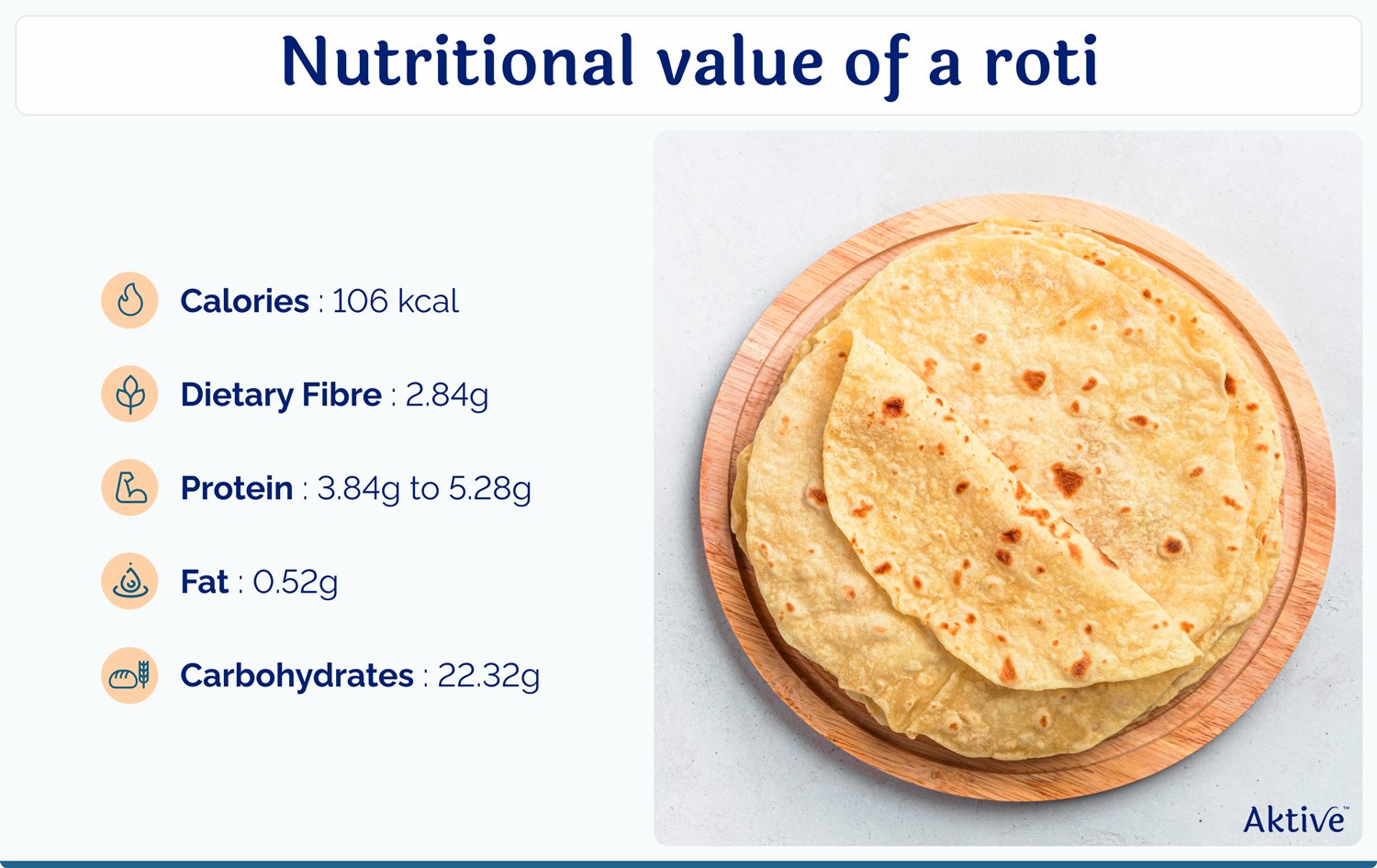
Did you know?
Multigrain rotis are more nutritious[1] compared to regular wheat rotis. They are a blend of whole grains like wheat, jowar, bajra, and more. With a moderate glycemic index (55-69) and 70-85 calories in one multigrain roti, they prevent huge spikes in blood sugar.
What different types of rotis are out there?
Rotis are largely made of wheat flour, but wheat isn’t the only kind of flour out there. You can experiment with rotis made from different flours.
11 different types of rotis in India
- Roti made with whole wheat flour
- Served with dals, sabzis, chutney, or plain milk
- Calories: 106 kcal
- Thick roti made from jowar (sorghum)
- Gluten-free, fibre-rich, low glycaemic index
- Calories: 56.8 kcal
- Roti made from bajra (pearl millet)
- Rich in fibre, minerals, antioxidants, and omega-3 fatty acids
- Calories: 119 kcal
- Gluten-free roti made from rice flour
- Soft and easy to digest
- Calories: 83 kcal
- Roti made using chickpea flour (besan)
- Rich in protein and fibre
- Calories: 104 kcal
- Found in dhabas pan-India
- Roti cooked in a clay oven (tandoor)
- Calories: 85 kcal
- Roti made from maize (makka) flour
- Rich in vitamins, minerals, and dietary fibre
- Calories: 90 kcal
- Roti made from finger millet (ragi)
- High in protein, fibre, calcium, and iron
- Calories: 64-87 kcal
- Pancake made from tapioca pearls (sabudana)
- Gluten-free and fast-friendly
- Calories: 120-132 kcal
- Popular in Maharashtra
- Flatbread made with mix of jowar, bajra, and aata
- Calories: 100 kcal
- Thick flatbread popular in Gujarat
- Made from whole wheat/millet flour
- Calories: 130 kcal
Chapati/Roti math: Calories edition
So before you decide how many chapatis/rotis to eat, it is important to know how many calories you would be consuming if you usually have more than one roti.
These are approximate values for a medium-sized (18 cm diameter or 40g) chapatis/roti:
- Half a roti/chapati will contain upto 53 calories
- 1 roti/chapati has upto 106 calories
- 2 rotis/chapatis have upto 212 calories
- 3 rotis/chapatis have upto 318 calories
- 4 rotis/chapatis have upto 424 calories
- 6 rotis/chapatis may contain upto 636 calories
The calorie count for a roti/chapati will change if it differs in size or is topped with add-on calories.
For instance, calories in roti without ghee will be less than calories in roti with ghee.
Or, 3 small chapati calories may be equal to 1 big chapati calories.
All of it boils down to how you prefer to eat your rotis.
Understanding this will either take a masterclass in roti nutrition or you may just have to step into the kitchen with a weighing scale and count the calories in chapatis/roti the right way.
The big question: Will roti make me fat?
The short, and perhaps the only answer you need to hear - No, it doesn’t!
The answer is also the same for mangoes, ghee, avocados, parathas, or basically anything you eat.
The real culprit here is not following healthy practices like portion control, balanced workout, sleeping well, and maintaining a calorie deficit.
So, is roti healthy?
Fitness and lifestyle coach Arjhan Rai says, “Roti is just a food. It's not going to make you fat or thin. You need to understand your calorie intake and then you can eat whatever you want and still lose weight.”
He also explains this with an interesting logic in his Instagram post.
Who should avoid eating roti?
While most people enjoy eating wheat rotis, there are certain instances where it is helpful to seek alternatives:
- Those affected with gluten sensitivity or celiac disease (an autoimmune disorder that damages the small intestine).
- People with diabetes.
- Weight-conscious individuals following a low-carb or keto diet.
- Wheat allergy or Non-celiac wheat sensitivity[2] - An allergic reaction can happen to any kind of component in the wheat grain. It may sound similar to gluten sensitivity, but the latter condition is restricted to the protein itself and shows up as gastric discomfort.
How to make your rotis healthier?
Whether roti is healthy or not has been a very controversial topic in health circles. But that doesn’t mean we can’t make it any healthier.
Curious how to do so? Check out these super useful tips to explore healthy alternatives to roti:
- Use less ghee/oil while roasting your roti for less fat content
- Cook rotis thoroughly on a hot tawa
- Make rotis with different whole grain flours like oats, millets, besan, etc
- Add greens like palak, methi, spring onion, or mung to the dough for more roti nutrition
- Eat rotis with protein-rich sides like paneer bhurji, egg bhurji, dal, or sabzis
- Add chia seeds and flaxseeds for more roti protein
If you need more healthy alternatives to roti or explore healthy ways to reduce the amount of calories in chapatis, check out this interesting and ‘nutrient-packed’ thread on Reddit:
low calorie rotis?
byu/self_elf1 inIndianFood
Wrapping it up
When eaten right, a roti nourishes you with essential nutrients and keeps you energised throughout the day.
But like any food that is mostly carbs, pair it with sufficient protein, fibre, and fats so you can balance your meals and avoid excess snacking.
While making your rotis, prefer whole grain varieties over refined atta whenever possible, and you are good to go!
Finding the perfect balance in your diet is just one part of your weight loss plans. If weight management is on your to-do list, Aktive is here for you.
Our experts understand that every person is unique, and we're here to guide you with hassle-free, evidence-based weight loss plans that do not ask you to starve yourself and yet, help you reach your desired weight.
FAQs
-
Can multigrain rotis help with weight loss?
-
Are multigrain rotis gluten-free?
-
How does the size of a roti affect its calorie count?
-
What’s healthier: Roti or rice?
-
Is it okay to eat roti every day?
-
Is ghee roti bad for you?
-
How many calories are in a plain roti with sabzi (vegetable curry)?
-
How many rotis should I eat for weight loss?
-
What are some low-calorie side dishes to pair with roti?
-
Can you freeze rotis to save cooking time during the week?
-
How much protein does a roti have?
References:
- [1] Nagaraju, R., Sobhana, P. P., Thappatla, D., Epparapalli, S., Kandlakunta, B., & Korrapati, D. (2020). Glycemic index and sensory evaluation of whole grain based multigrain Indian breads (ROTIS). Preventive Nutrition and Food Science, 25(2), 194–202. https://doi.org/10.3746/pnf.2020.25.2.194
- [2] Khan, A., Suarez, M. G., & Murray, J. A. (2019). Nonceliac gluten and wheat sensitivity. Clinical Gastroenterology and Hepatology, 18(9), 1913-1922.e1. https://doi.org/10.1016/j.cgh.2019.04.009


